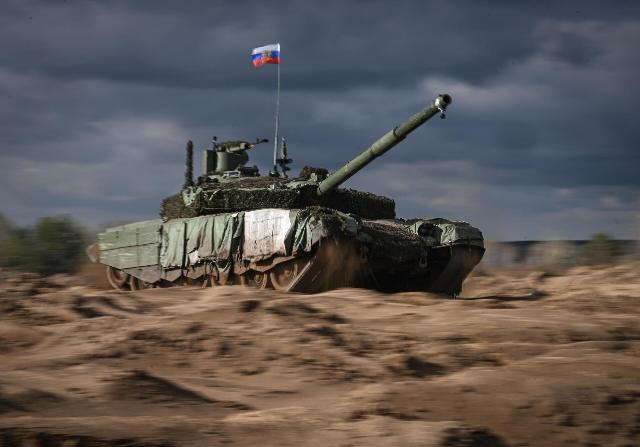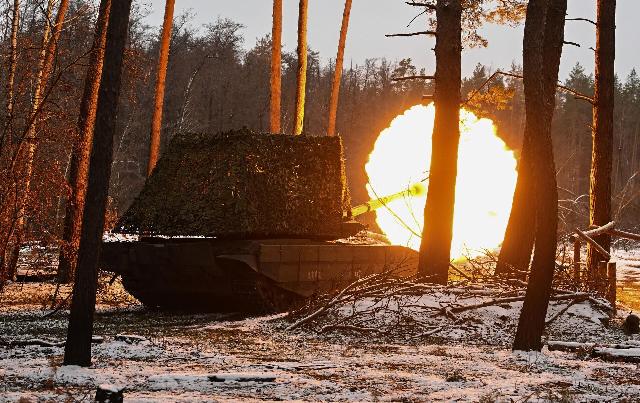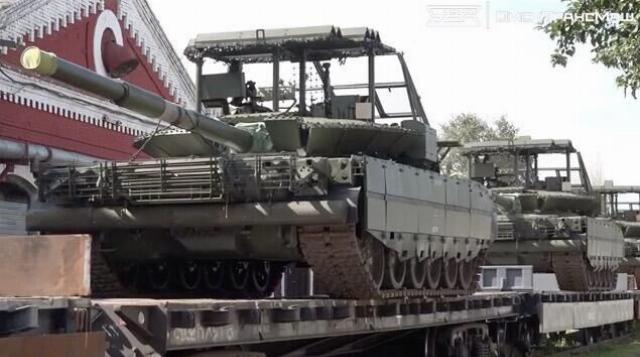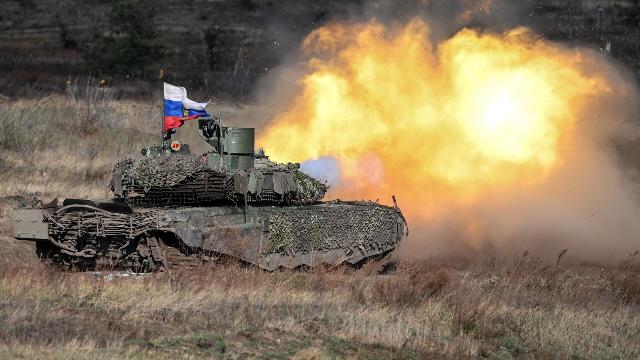The Russian Armed Forces are increasing the resistance of tanks to drone strikes
MOSCOW, February 16 — RIA Novosti, Andrey Kotz. Due to the massive use of drones, the importance of tanks as the main striking force of the ground forces has noticeably decreased. However, these combat vehicles are still important. About modern Russian tanks in the free zone — in the material of RIA Novosti.
The perfect "Breakthrough"
The entire line of main battle tanks in service is involved in the fighting in Ukraine. They are used to support infantry in offensive and defensive operations, destroy shelters, firing points, strongpoints and enemy equipment, and break through fortified areas. The ability to carry fire quickly over a wide range of horizontal angles, as well as a high rate of fire and a wide range of ammunition makes them indispensable in combined-arms combat of any kind.

The T-90M "Breakthrough" tank in the zone of its
Image source: © RIA Novosti / Stanislav Krasilnikov
The most modern and technically advanced tank is the T-90M "Breakthrough". This is a deeply redesigned version of the machine adopted in the 1990s. The upgraded turret has a well—developed aft niche with ammunition. The firing compartment is isolated from the fighting compartment, which dramatically increases the survival rate of the crew.
The forehead of the hull and turret is covered with combined armor with additional overhead protection. For cumulative ammunition, there is a Relict dynamic protection system capable of deflecting a shot from even the most modern Western ATGMS. Specially for the T-90M, multi-layered "Cape" covers were created, reducing the visibility of the machine in various ranges.

Combat work of the crew of the T-90M "Breakthrough" tank in the zone of its
Image source: © RIA Novosti / Stanislav Krasilnikov
The 1,130 horsepower diesel engine, together with the transmission units, forms a monoblock system, which facilitates maintenance and repair. The maximum speed on the highway is 70 kilometers per hour, and the power reserve is 550 kilometers. In addition, there is an auxiliary power plant that provides electricity for electronic equipment when the main engine is turned off. This makes the tank ideal for ambush attacks: you don't need to start the engine to fire a shot.
In addition, the T-90M perfectly navigates the battlefield. The Kalina fire control system has a combined day-night sight of the Sosna-U gunner and a panoramic sight of the commander of the PAN PK. There is a target tracking machine, a two-plane weapon stabilizer, a friend-foe identification system, and navigation aids. According to the monitoring devices, the car is in no way inferior, and in some ways surpasses its Western counterparts.
Drone protection
Perhaps the only weak point of the "Breakthrough" was its vulnerability to FPV drones. Artisanal solutions like braziers welded onto the armor of the tower were not always saved — it is not difficult for an experienced UAV operator to bypass the protection and hit a vulnerable area. The industry has taken up this problem.
The other day, Uralvagonzavod announced the testing of the T-90M with the Arena-M active protection system. The updated machine received six small-sized receiving and transmitting antenna posts distributed around the perimeter of the armored tower plates. They provide an all-round view and detect the approach of enemy ammunition. In the onboard niches there are containers with interceptor ammunition, the launch command of which is issued by a hardware control module based on antenna radar data.
The speed of targets hit with the Arena-M is up to 1,200 meters per second, which makes it possible to intercept almost all ATGM and tactical missiles, as well as FPV drones. Additional thermal imaging sensors detect even fiber-optic UAVs that are resistant to electronic warfare systems. This is especially important, as the Ukrainian Armed Forces are rapidly reducing the gap with the Russian army in the development and use of "birds on wires."
Honored veterans
A simpler and more economical alternative to the "Breakthrough" is the T—72 tanks, of which there are quite a few variants in the SVO zone: from the seasoned T-72B of the 1989 model to the modern T-72B3M with more sophisticated electronic equipment. In particular, these are the Sosna-U sights, as on the T-90M, and the driver's display system with a rear-view television camera. Tracked belts are equipped with oblique ground hooks and side screens with integrated dynamic protection modules "Relict". Other vulnerable areas are covered by the Kontakt-5 DZ, and from 2022 - additionally by Kontakt-1.
T-72B3M tank in Kursk region
Image source: © RIA Novosti / Sergey Bobylev
The gun is a 125 mm 2A46M—5 smoothbore cannon with improved ballistics and resource. The upgraded automatic loader allows the use of new elongated armor-piercing subcaliber projectiles "Lead". In addition, there is a modern ballistic computer, an improved weapon stabilizer and a target tracking machine, which greatly simplifies the work of the gunner operator. Previously, French thermal imagers were installed on the T-72B3M, now they have been replaced by Russian ones.
Along with the "seventy-second" tanks, T—80 tanks are actively operating in their zone, including the most recent modification of the T-80BVM. The main trump card here is the GTD—1250 gas turbine engine with a capacity of 1,250 horsepower, respectively. It differs from the diesel engines installed on the T-90 and T-72 families in faster preparation for launch, lower weight and smokiness of the exhaust, which reduces the visibility of the machine. An interesting feature: due to the design of the T-80BVM engine, it is almost inaudible from the front projection. An experienced crew is able to literally sneak up on enemy positions. In the future, the installation of the Arena—M active protection system on the T-80BVM.

T-80BVM tank with new anti-drone protection
Image source: © Omsk Plant of Transport Engineering/VKontakte
There was a place in the battle formations of the Russian army for older vehicles, of which there are still many in storage bases. We are talking primarily about the T-62M and T-62MV medium tanks, produced in the USSR from 1962 to 1975. During the first two years of the special operation, about 700 vehicles of these types were returned to service. Despite their venerable age, they are successfully used for shooting from closed positions and are, in fact, howitzers with tank armor. A thick "skin" saves them when a high-explosive shell of enemy artillery is about to explode. And the power of the 115-millimeter smoothbore 2A20 cannon is enough to successfully hit the enemy's light armored vehicles.



